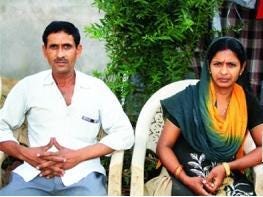How few Keralite women are changing the future Indian social landscape
India is achanging. A few Kerala brides married to Haryana Jats are changing the landscape and the social norms in that society.
“Mere to bhag khul gaye iske aane te (She has proved lucky for me),” says Sarti, the mother-in-law of 35-year old Omna from Kerala’s Kannur district who can’t stop gushing about her bahu who has plans to send her baby daughter for higher studies in a household where girls have never studied beyond the basic school level.
Haryanvi men have to pay for their elders’ folly of killing the girl child in the womb. Now, there aren’t enough women to go around for all the men. So, they have married women from Kerala – where the ratio of women/men is much better. But along with that come many other things. Kerala is not just ahead in the women/men ratio – but even in literacy and in progress. Socially, Keralites are more liberal. Haryana is a patriarchal society, while Kerala is matriarchal. Women aren’t used to live as an after thought. They contribute a lot to the society.
Gender equality, sanitation and right to expression are three issues which hit these women head on and puts them in cross-hairs of the Haryanvi society norms.
These women want to send their kids – girl kids specifically – to good schools. And if that means private schools then so be it! They are appalled that even anganwadis in Kerala are better than some private schools in Haryana – but its a start. These exported brides aren’t going to take things lying down. They are setting up a revolt in a traditional society and interestingly being successful at it.
Why are the Haryanvi elders not complaining?
Despite their frankness and progressive views in a traditionally closed society, young women like Sreeja are being heard with patience mainly for two reasons — they are an answer to the growing problem of bachelors in a state that has a skewed sex ratio and because they have adapted to their new homes by embracing local customs and even learning the Haryanvi dialect. “If they are so flexible then why should we not listen to their views, which after all are for the welfare of the society,” says Sreeja’s mother-in-law. Omna, the other bride from Kerala, who had never worked in a field, now assists her husband actively in farm work.
Because the locals admire and respect their contribution in changing themselves for the new in-laws and society.
******* ******* ********
The new India is different from the earlier one. It is coming together because South and North parts of the country are now mutually interdependent because they are so different. In earlier times, this difference created issues. Now, these differences create opportunities. Opportunities to grow and learn.
South Indians were focused more on education. North Indians more on entrepreneurship and sports. Now, they are mixing. Mixed marriages are more common. Its not so uncommon to have a Punjabi-Keralite or UPite-Tamilian spouses coming together and talking to each other in Hinglish, while their kids learn the mother’s tongue and father’s tongue (a bit).
These changes will change the face and future of India. The regional movements that the various IT companies use to leverage their various offices – are not just making the Outsourcing delivery more diverse and efficient.. but is changing the diversity and efficiency frameworks for India as well.




